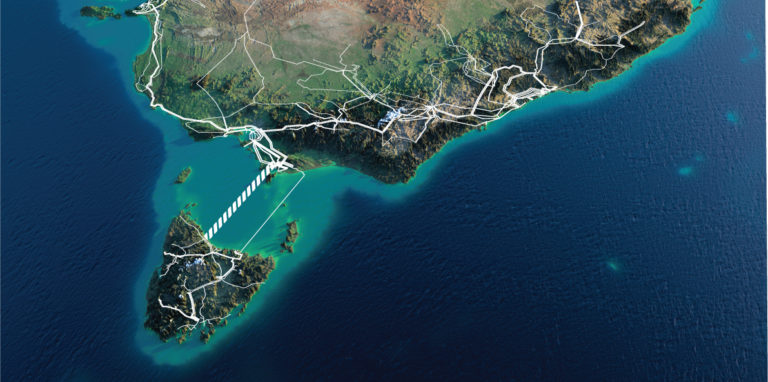Marinus Link has launched a major marine engineering survey to identify the optimum route for an undersea cable to connect Tasmania and the Australian state of Victoria.
Marinus Link said the survey, the third for the project and the largest so far, will build on results and analysis of previous site investigations and help identify the most suitable corridor for burying the project’s undersea high voltage direct current (HVDC) cable.
Marinus Link Chief Executive Bess Clark said the survey work is “well underway, with feet on the ground and a ship being mobilized.”
The survey will focus on 255 kilometers of space between Heybridge in northwest Tasmania and Waratah Bay in South Gippsland, Victoria. Those on board the vessel will investigate approximately 110 sites across the Bass Strait, in sea depths up to 80 meters. The survey is expected to take between four to six weeks to complete.
Clark has previously said the proposed project will “give Australians access to cheaper, clean, reliable energy and transform Tasmania into a renewable energy powerhouse.”
“With Project Marinus, businesses and investors in mainland Australia will have the assurance of a stable power supply when solar and wind generation is not available and batteries have run out,” she said. “Along with other major transmission projects, Project Marinus will become the backbone of a reliable, lower emissions NEM for the next decade and beyond.”
The current target date for commissioning and commercial operation of the first 750MW stage of the Marinus Link project is 2027-28. Commissioning and commercial operation of the second 750MW stage is currently scheduled for 2029-30.
The start of the survey follows the Tasmanian government’s announcement that it has terminated its commercial agreement with the company that operates the Basslink undersea cable that currently links the island state’s grid to the mainland.
Tasmania Energy Minister Guy Barnett said in a statement on Thursday the government and state-owned utility Hydro Tasmania had taken “another step” towards protecting their legal rights, by terminating the Basslink Services Agreement (BSA).
The move is the latest in a long-running legal dispute between the government and the operators of the link following a months-long failure of the interconnector in 2015 which contributed to an energy crisis in the state. A 2020 arbitration concerning the cause of the outage found the link cannot meet the capacity requirements set out in the BSA.
Barnett said since then the government and Hydro Tasmania have been in negotiations with Basslink’s receivers “regarding an alternative commercial arrangement.” The termination of the BSA is not expected to impact Tasmania’s energy security with Barnett saying the interconnector will remain in service while negotiations continue.
Hydro Tasmania said it remains willing to discuss with receivers an alternative commercial model that could include key elements of the BSA, that would provide funding during the receivership and help transition the asset to an alternative commercial model.
This content is protected by copyright and may not be reused. If you want to cooperate with us and would like to reuse some of our content, please contact: editors@pv-magazine.com.




1 comment
By submitting this form you agree to pv magazine using your data for the purposes of publishing your comment.
Your personal data will only be disclosed or otherwise transmitted to third parties for the purposes of spam filtering or if this is necessary for technical maintenance of the website. Any other transfer to third parties will not take place unless this is justified on the basis of applicable data protection regulations or if pv magazine is legally obliged to do so.
You may revoke this consent at any time with effect for the future, in which case your personal data will be deleted immediately. Otherwise, your data will be deleted if pv magazine has processed your request or the purpose of data storage is fulfilled.
Further information on data privacy can be found in our Data Protection Policy.